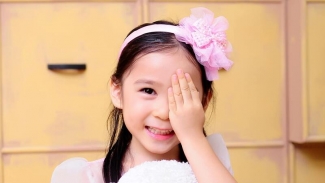Lazy eye (Amblyopia)
What is amblyopia?
Amblyopia, also known as lazy eye, is an eye condition that commonly occurs during childhood and affects its visual development. Amblyopia is caused when the brain primarily processes images from one dominant eye, while the other eye (the lazy eye) does not offer clear eyesight.
Who can develop a lazy eye?
Lazy eye develops in early childhood. However, you may only find out you have amblyopia later in life, if it has not been diagnosed when you were a child.
Childhood amblyopia
Amblyopia typically develops in the earliest years of life, with toddlers or young children. It tends to occur in only one eye and, if detected and treated early, can be improved without difficulties.
However, if you start treatment later, you might experience permanently reduced vision in the affected eye.
Adult amblyopia
In some instances, a lazy eye that has not been diagnosed and treated in early childhood can be detected during adulthood through a routine sight test. Amblyopia may still be treated in adults, through vision therapy and prescription lenses, though it may not be as effective as it would in childhood.
What causes lazy eye?
Amblyopia is caused when your left and right eye do not work together properly to send an image to the brain, usually because the eyesight in one eye is significantly poorer than in the other. The brain will favour the impulses sent from the eye with the sharper vision, neglecting the development of the weaker eye.
Strabismic amblyopia
In most cases, amblyopia is caused by a strabismus (often known as a squint), an imbalance in the muscles of the eyes that are responsible for positioning them. This means the eyes don’t line up, with the affected eye either turning inwards or outwards, often resulting in double vision.
To avoid double vision, the brain will blend out visual impulses sent from the eye that wanders without focus and rely on the eye that is more stable.
Refractive amblyopia
Sometimes, a lazy eye can be caused by an unequal refractive error. This means that one eye is significantly more short or long-sighted than the other eye or has a severe form of astigmatism.
If the lazy eye is caused by an uncorrected refractive error, the brain can choose to ignore the blurry or distorted vision of the affected eye and focus solely on the other eye.
Cataract
If your child has a congenital cataract in one eye, light won’t be able to enter, impairing the vision in this eye. In order to avoid amblyopia and prevent permanent reduced vision, it may be necessary to treat and remove the cataract.

What are the signs of lazy eye?
Most young children will not notice if they have poorer vision in one eye, and the eye condition can go unnoticed until diagnosed by a paediatric optometrist. However, there are a few signs, that can indicate whether your child has a lazy eye.
Poor depth perception
We need the eyesight from both eyes to perceive depth properly. Therefore, as the brain ignores the sight from one eye, your child might have issues seeing in three dimensions. An altered depth perception can cause children to often bump into objects in a room and generally appear clumsy.
Struggling to focus
Parents or teachers might notice that a child is squinting or closing one eye while struggling to see clearly. However, this can be the sign for many types of vision problems in children. It is best to schedule a vision screening regularly to ensure any issues are treated as soon as possible.
A squint
If the lazy eye is strabismic, it is typically obvious as the affected eye will turn in, out, up or down whilst the good eye is aligned and looking straight on.

Treatment options for lazy eye
Early treatment of a lazy eye improves the chances of a healthy visual development for your child. Most optometrists recommend treatment before the age of 8, as it offers quick results. This is because infants’ and young children’s brains are still learning and adapting, therefore they have a better chance at adjusting to changes.
Corrective glasses
Most children will have their lazy eye treated by wearing corrective eye wear or an eye patch.
The corrective glasses can be used to correct a refractive error that causes the lazy eye. They need to be worn regularly, with frequent check-ups with the optometrist.
Eye patch
The eye patch is used to cover the dominant eye, previously solely responsible for vision. This encourages the use of the lazy eye. In most cases, the patch will need to be worn, in conjunction with corrective glasses, for a few hours each day, over several months.
Eye drops
Specific eye drops can be used to blur the vision of the dominant eye by dilating the pupil. They function similarly to the eyepatch, as they encourage the eye with the poorer vision to focus. Therefore, they are often used as an alternative for children where compliance in wearing an eye patch may be poor.
Surgery
If the lazy eye is caused by a cataract, it might need to be treated surgically. Cataract surgery is a routine procedure and usually only takes up to 2 hours. While most adults are awake during cataract surgery, young children are placed under a general anaesthetic and won’t be awake for the procedure.
Strabismus treatment
Strabismic amblyopia is treated by firstly resolving the squint of your child. The treatment options for a squint include glasses correcting long-sightedness, and eye exercises that support the muscle control of the eyes.
Your child may also undergo surgery to treat the squint, to align the eye muscles. The surgery is typically only recommended if glasses and eye exercises did not resolve the squint.



